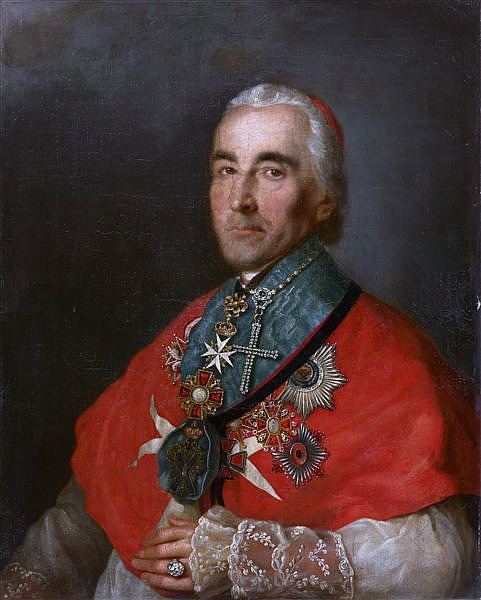Ordination 3 July 1763 Name Stanislaw Siestrzencewicz | Consecration 3 October 1773 | |
 | ||
Died December 1, 1826(1826-12-01) (aged 95)Saint Petersburg | ||
Stanisław Bohusz Siestrzeńcewicz, or Stanisłaŭ Bohuš-Siestrancevič (Belarusian: Станіслаў Богуш-Сестранцэвіч, 1731–1826) was a Belarusian who became the first bishop of the Metropolitan Archdiocese of Mohilev, an Archbishop from 1784 and a prominent member of the Russian Academy (1807), who had earlier converted from Calvinism.
Contents
Biography

Stanisław Bohusz Siestrzeńcewicz was born in Zanki, Troki Province (now Svislach District Grodno Region). His father was a Calvinist. Stanisław studied at Slutskaya Calvinist School, and later at the University of Frankfurt. After traveling through Europe, he visited Amsterdam and London, and served in the Prussian Infantry and the Lithuanian Cavalry. In 1761, he retired with the rank of captain.
He then worked as a tutor for the Radziwiłł family, at which point he converted to Catholicism. In 1762, Siestrzeńcewicz developed a course of theology in Warsaw.
In 1763, he received holy orders. He served as rector in Gomel and Bobruisk and later, a canon in Vilnius. On 2 July 1773, he was appointed Titular Bishop of Mallus. On 3 October 1773, Monsignor Gyultsen, representing the Bishop of Smolensk, officially consecrated him as a bishop. After that, he was appointed Auxiliary Bishop of the Diocese of Vilnius, which was ceded to Russia. In early December 1773, Catherine II announced the creation of a Belarusian Catholic diocese with headquarters in Mogilev and Siestrzeńcewicz's appointment as Belarusian bishop.
The newly appointed bishop observed all Latin Rites in Russia (including Moscow and Saint Petersburg). In 1774, Siestrzeńcewicz brought a printing press to Mohilev in order to publish spiritual and secular literature. On 14 February 1782, Catherine II transformed the diocese to the Belarusian Archdiocese of Mohilev and Siestrzeńcewicz became Archbishop. He took office after a ceremony on 20 February 1782. From this year until the end of the century, he lived in Mohilev.
His appointment was made without the consent of Pope Pius VI, and in 1783 an extraordinary ambassador of the Holy See, Giovanni Andrea Archetti, was sent to Saint Petersburg settle the conflict. Following the talks, in exchange for certain concessions, the pope approved Siestrzeńcewicz's nomination and the post of archbishop and handed him the pallium on 22 February 1784.
In 1783, he founded the theater in Mohilev. From 1798 to 1800, he chaired the collegium of the Catholic Justice Department. From 1801 to 1810 he was Chairman of the Catholic Theological Board. He died in 1826 at the age of 95. He was buried in the church of Saint Stanislaus in Saint Petersburg.
Honours
Order of the Russian Empire
Order of the Polish-Lithuanian Commonwealth
